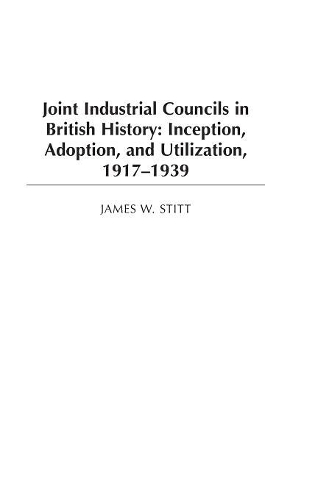
Joint Industrial Councils in British History: Inception, Adoption, and Utilization, 1917-1939
(Hardback)
Publishing Details
Joint Industrial Councils in British History: Inception, Adoption, and Utilization, 1917-1939
By (Author) James W. Stitt
Bloomsbury Publishing PLC
Praeger Publishers Inc
30th March 2006
United States
Classifications
Tertiary Education
Non Fiction
338.60941
Physical Properties
Hardback
226
Description
Joint Industrial Councils: Inception, Adoption, and Utilization, 1917-1939 is a study of how a WWI proposal for permanent improvement in labor-management relations came about, why the target industries ignored it, and how it found a purpose in the second-tier industries for which it was not originally intended. The press, social reformers, academics, and various business interests touted JICs as the beginning of worker control of industry, while skilled trade unions saw them as a plot to harm workers' interests. Their eventual modest use was directed to needs within individual industrial enterprises and not to more global missions, such as the remaking of British industry in general. But successful JICs undertook serious issues that management and unions needed to address, such as wage rates, retirement plans for workers, and safety-related concerns. Moreover, the level of labor-management understanding in JIC industries improved to the point that these industries suffered no strikes in the inter-war period; the conditions of employment for the workers improved; and productivity increased.
Reviews
British Prime Minister Lloyd George introduced the Joint Industrial Council initiative in 1917 in response to worries over work stoppages in heavily organized industries vital to the prosecution of the war. The Joint Industrial Councils sought to bring greater productivity to industry by promoting cooperation between representatives of business and labor. In this organizational history, Stitt describes the political inception of the Joint Industrial Councils and describes how they were instituted and how they operated and developed up until the outbreak of World War I. He describes how, ironically, they came to be used much more in the lightly organized industries than in the heavily organized industries for which they were first targeted. He also analyzes the purposes for which the councils came to be used: opposition to governmental regulation, protection of industries under stress, and orderly adjustment of wages. * Reference & Research Book News *
Author Bio
James W. Stitt is Professor of History at High Point University in North Carolina. He also currently serves as Chair of the History and Political Science Department and as Faculty Marshal. His research interests concern industrial productivity and efficiency in Britain between WWI and WWII, with a focus on labor and management cooperation for common purposes and the related political and social issues associated with business change.
